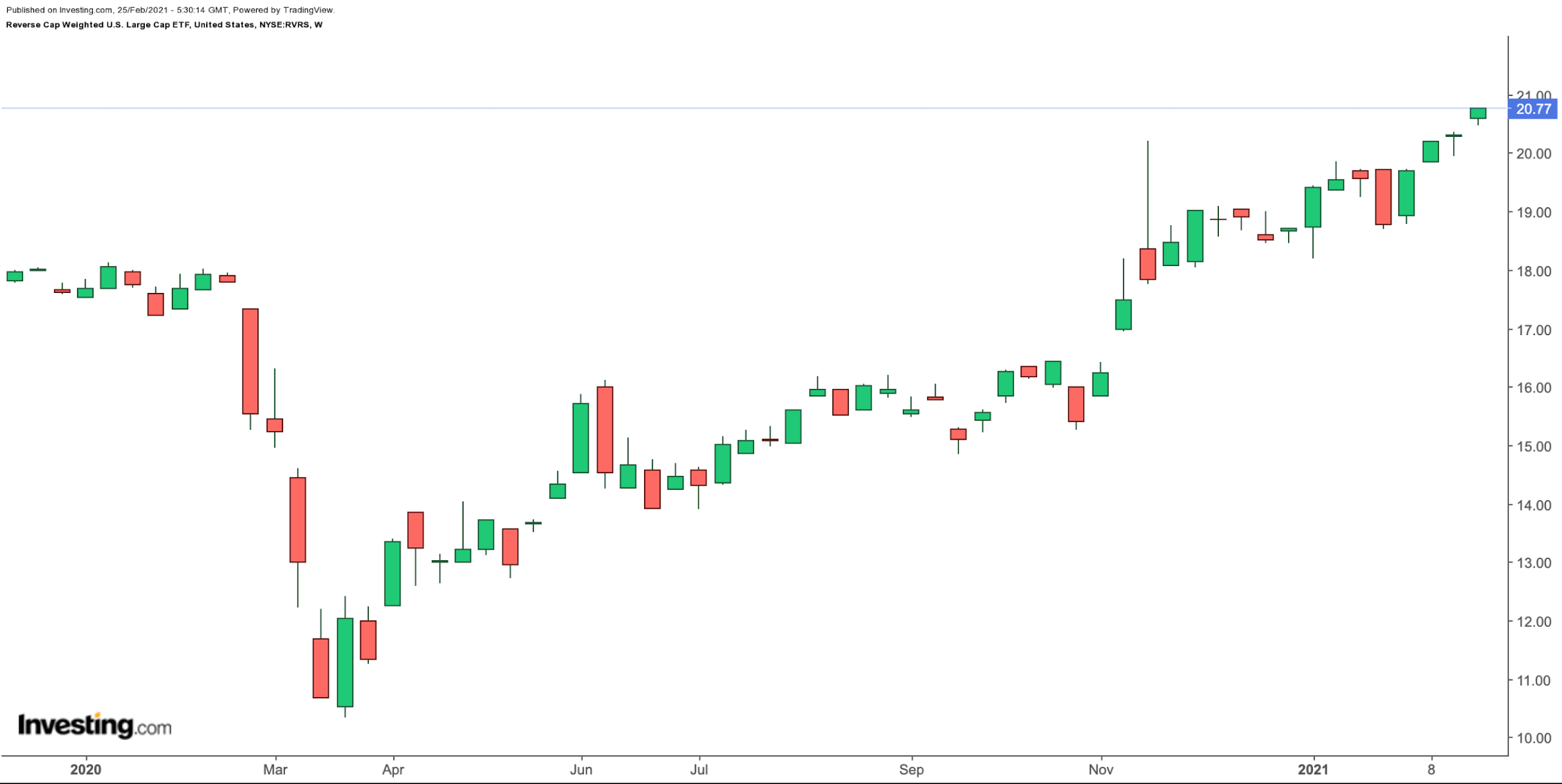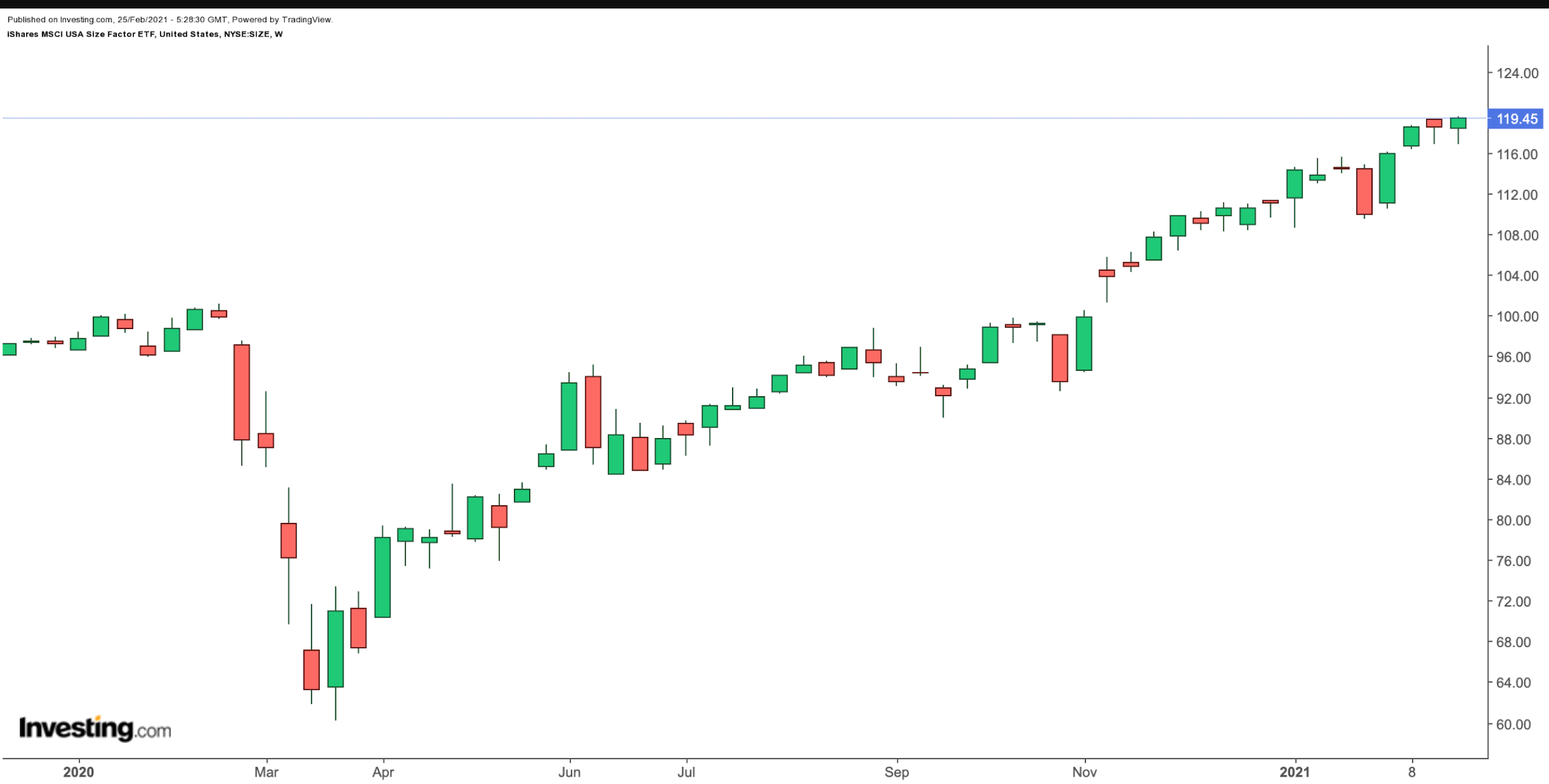As broad markets come under increased pressure and a variety of mega-cap shares start to lag, some investors might feel it is time to rotate into small capitalization stocks. In previous articles, we discussed small-cap stocks and funds that focus both on U.S. firms as well as global companies.
The two funds discussed today might be of interest to readers who want to diversify in the coming months, by adding small caps to their portfolio but without overlooking large cap equities.
1. Reverse Cap Weighted U.S. Large Cap ETF
Current Price: $20.77
52-Week Range: $10.34 - $20.97
Dividend Yield: 1.76%
Expense Ratio: 0.29% per year
The Reverse Cap Weighted U.S. Large Cap ETF (NYSE:RVRS) gives access to the companies in the S&P 500 index. But the fund weights companies by the inverse of their market cap.

Most funds base their holding on indices that have high concentrations of large-cap or even mega-cap companies, like Apple (NASDAQ:AAPL), Microsoft (NASDAQ:MSFT) and Amazon (NASDAQ:AMZN). Their respective market caps are $2.09 trillion, $1.75 trillion and $1.57 trillion. However, in RVRS the exposure is tilted toward smaller caps. Readers could also remember that we recently looked at equal-weighted ETFs which also provide increased exposure to medium- and small-cap shares.
Since its inception in October 2017, funds under management in RVRS have grown to $17.4 million. In other words, it is still a small fund. Petroleum refiner HollyFrontier (NYSE:HFC), technology group Xerox (NYSE:XRX), apparel retailer Gap (NYSE:GPS), activewear apparel firm Hanesbrands (NYSE:HBI) and real estate investment trust (REIT) SL Green Realty (NYSE:SLG) are among the leading names in the roster. Their market caps range from about $4 billion to $10 billion.
Over the past year, RVRS has returned close to 20%. It hit an all-time high in February. By comparison, the SPDR® S&P 500 (NYSE:SPY), a widely-held ETF that tracks the S&P 500, is up almost 21% in the past 12 months. Since the start of 2021, RVRS and SPY have moved up 10.9% and 4.2%, respectively.
Put another way, a potential rotation into the small caps might already be under way. As part of portfolio diversification, we'd look to buy the dips in the fund.
2. iShares MSCI USA Size Factor ETF
Current Price: $119.45
52-Week Range: $60.20 - $119.61
Dividend Yield: 1.36%
Expense Ratio: 0.15% per year
The iShares MSCI USA Size Factor ETF (NYSE:SIZE) focuses more on medium- and small-cap businesses in the U.S. The fund started trading in April 2013 and its net assets stand at $843 million.

SIZE, which has 620 holdings, tracks the returns of the MSCI USA Low Size Index. In terms of sectoral breakdown, information technology (IT) heads the list with 19.31%. Next in line are industrials (12.25%), financials (13.76%), health care (13.30%), consumer discretionary (10.53%), consumer staples (4.97%) and others.
The top 10 names comprise about 3% of the fund. In other words, no company’s weighting is large enough to affect the price of the fund. Oil exploration groups ConocoPhillips (NYSE:COP) and Occidental Petroleum (NYSE:OXY), global media and entertainment business ViacomCBS (NASDAQ:VIAC), media and Internet group IAC/InterActiveCorp (NASDAQ:IAC) and miner Freeport-McMoran Copper & Gold (NYSE:FCX) are the leading names in SIZE. Their market caps range between $20 billion and $70 billion.
In the past 52 weeks, the ETF is up about 21% and hit an all-time high in February. We like the diversity offered by SIZE. A potential decline toward the $110 level would improve the margin of safety for buy-and-hold investors.
